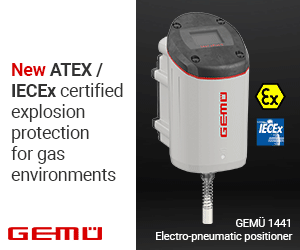Get the whole picture with Exostiv FPGA debug for Xilinx & Intel
EXOSTIV multiplies FPGA visibility by 200,000 times for Xilinx and Intel! EXOSTIV is a new kind of embedded instrumentation used in the lab at ‘board bring-up’. It provides up to 200,000 times more visibility on the system under test than traditional instrumentation techniques. Unlike software-based techniques and emulation, EXOSTIV™ is used on the target or prototyping boards running at speed of operation. It provides an extended visibility on internal nodes over large periods of time – and this, with a minimal impact on the FPGA
In-lab FPGA debug has hit the wall of complexity. FPGA programmability has traditionally enabled engineers to use board prototypes in the lab for debug and verification. Using a system at speed in its ‘real’ environment is used to overcome modelling errors and excessive simulation times. However, with the extreme complexities achieved by FPGAs today, normal instrumentation-based methodologies do not provide sufficient visibility of the system-under-test and create tough board implementation constraints.
‘The electronic engineer is like a doctor without X-Ray’ Board bring-up is especially critical. When the FPGA engineer puts the system together, virtually anything can go wrong. The system behaviour is ’emergent’, as it is a function of not just the individual pieces, but the way they collectively interact as a whole.
For a demonstration, or more information, please contact us info@telexsus.com
As specialists in electronic board/system analysis, test and compliance equipment, Telexsus also provides tools, training and services for serial protocols, JTAG and functional test. This includes Teledyne LeCroy protocol analysers, exerecisers, jammers and emulators for PCI Express (Gen1, Gen2, Gen3,Gen4, NVMe & M-PHY), USB (including USB 3.1 Power Delivery and Type-C), SAS / SATA, 10/25/40/50/100G Ethernet and Fibre Channel (8G, 16G & 32G). This equipment has become the defacto standard for analysis and debug of high-speed serial protocols, as well as the tools of choice for compliance and validation. Due to the nature of these products users range from hardware/firmware engineers to software and system architect engineers who use the equipment to discover and correct persistent and intermittent errors and flaws at all levels. Teledyne LeCroy’s expertise in probing high-speed links gives industry-leading performance for testing today’s most challenging serial interfaces. The advanced protocol analysis software offers a short learning curve with many analytical views which automatically interpret the protocol and data traffic, displaying the information in an easy to understand format. The tools will automatically flag protocol violations and make understanding crucial metrics, such as bandwidth, straight forward. All this makes the tools suitable for all engineers whatever their level of knowledge of the protocol.
For hardware prototype development and manufacture testing, Telexsus supply the market-leading XJTAG boundary scan tools. These are used by hardware engineers to speed up development work and board debugging, and which can subsequently be used for volume production test. It works by using the JTAG devices (FPGAs, uPs, CPLDs, DSPs etc) on the target board to test not only those devices, but other non-JTAG parts (SDRAM, Flash, I2C, Ethernet, etc) as well. Hence, it allows the designer stop quickly verify boards are designed and built as they should be, without having to involve the software team or develop functional tests. This can streamline the hardware development and remove uncertainties from the whole board bringup process.
Finally, for test engineers who need a compact, reconfigurable functional test system – the J-Testr system provides a complete power, thermal and stimulation environment to the users’ Unit Under Test (UUT). The system can be setup and entirely controlled by JTAG, for example using XJTAG; or, driven by Ethernet (e.g. with ATEasy test software or Python); or both, e.g. drive with JTAG and monitor over Ethernet. The built in load testing (up to 80W), timer card (75Mhz frequencies and pulses to 5ns resolution response), power supply (programmable ramping, monitoring, low noise, sequencing), analogue (16 bit, DAC / ADC, programmable external mux), digital I/O, communicatons (RS422/485, CAN, ARINC429) plus ability to add bespoke test electronics means that the system can replace much larger, bulkier and more costly test systems while providing a straightforward environment for fast test development.
We work with companies across the design and engineering sector. We will gladly provide evaluations, technical support and advice to engineers and management teams to ensure they equip their projects with the correct tools and training to get the job done.
![]()



























































































































